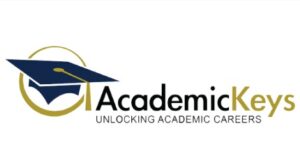A SYSTEMATIC REVIEW OF MYOFUNCTIONAL APPLIANCE THERAPY AND FIXED APPLIANCE THERAPY ON SPEECH IN ORTHODONTIC PATIENTS
Background
Myofunctional appliance therapy and fixed appliance treatment have become a vital aspect of modern orthodontics, with a large focus on orthodontic research. Orthodontic treatment, whether through myofunctional appliance therapy or fixed appliance therapy, aims to correct malocclusion and improve oral function. However, the impact of these treatments on speech remains unclear.
Methodology
We conducted a comprehensive literature search for published publications across various databases, including PubMed, Medline, the Cochrane Library, and Web of Science, as well as supplementary sources like Google Scholar and ClinicalTrials.gov, covering the period 1983-2022. A total of 5217 research papers were screened using keywords such as “myofunctional appliance and speech,” “fixed orthodontic appliance and speech,” “speech impairment in orthodontics,” “labial versus lingual treatment impact,” and “fixed functional appliance and phonetics or articulation.”
Result
This review included a total of twelve different investigations, categorized into four randomized controlled trials (RCTs), three controlled clinical trials (CCTs), four prospective cohort studies, and one clinical study. In this investigation, a total of 310 patients studied who were underwent treatment with various myofunctional appliances removable and fixed functional appliances. As well as fixed orthodontic appliances, including both labial and lingual braces were examined. Of these twelve studies, seven were dedicated to examining the effect of myofunctional appliances on speech. These studies meticulously analyzed how these appliances, designed to correct functional and structural anomalies, affected the patients’ speech patterns and clarity.
Conclusion
This review emphasizes, the risk for difficulties with speech while using fixed orthodontic appliances like labial and lingual braces, as well as myofunctional appliances like activators and twin blocks. According to the analysis, devices like the Frankel regulator and Bionator have less of a detrimental effect on speech than twin blocks and activators. Particularly, it was found that individuals utilizing twin blocks and activators had more severe speech disturbances; this underscores the necessity of managing these effects with caution in practical practice. In order to reduce speech-related difficulties for patients undergoing orthodontic treatment, this review highlights, the significance of choosing the right orthodontic appliances beneficial to improve patient outcomes.
Keywords: Myofunctional appliances, Fixed appliances, Labial appliances, Lingual appliances,




















